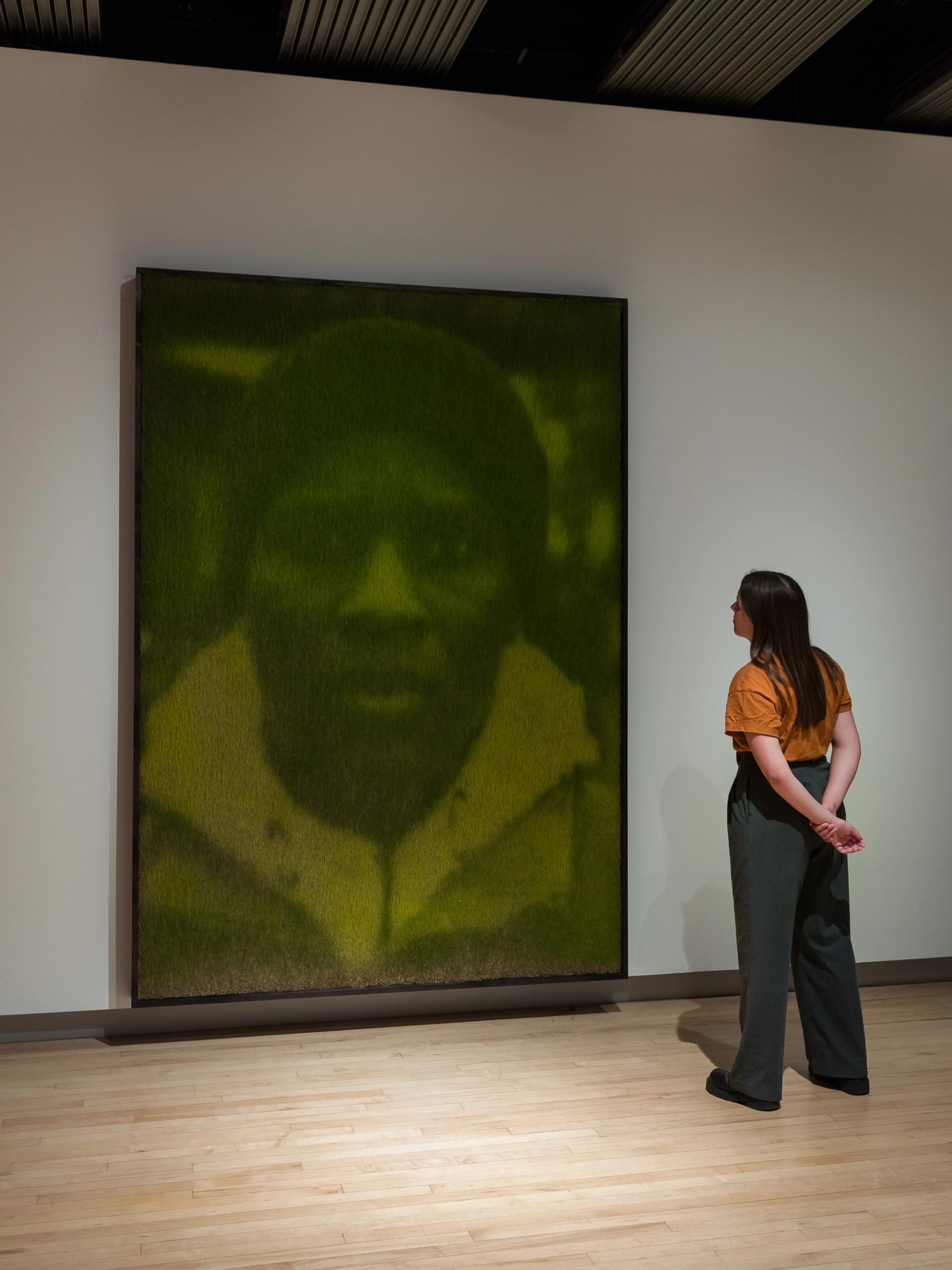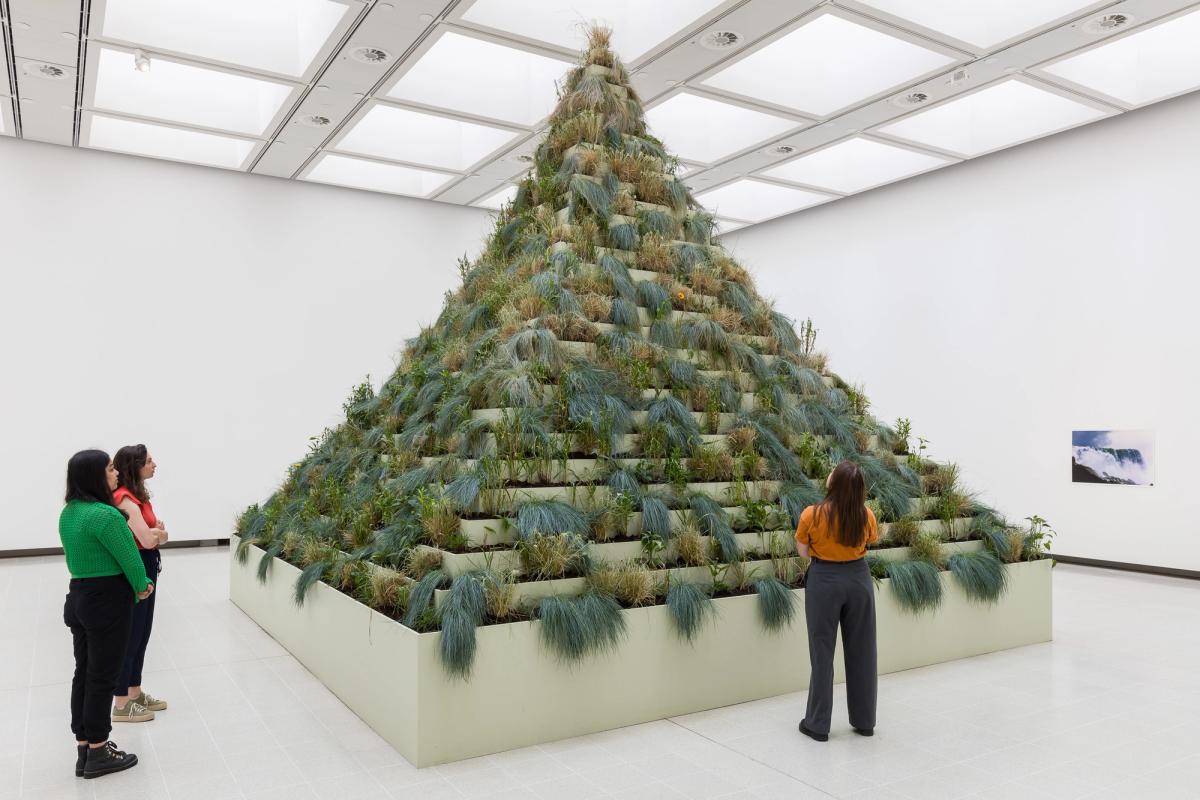The Hayward Gallery’s environmentally-themed summer blockbuster, Dear Earth: Art and Hope in a Time of Crisis (until 3 September) "takes a different route to look at the environmental crisis: it doesn’t aim to breed despair,” says its chief curator Rachel Thomas. Rather, it vies to "open hope in a way of potentials,"—an idea offered by Otobong Nkanga, one of the show’s contributing artists.
Admirable aspirations, and with extractions, extinctions and extreme weather systems currently at an all-time global high we need as much hope as we can muster. But while no one can doubt their fine intentions, many of the 17 artists in Dear Earth seem to be addressing the climate and ecological emergency in the spirit of an earlier era when information was hazy, ideas around the environment vague, and it was a big deal for galleries even to be considering green issues. After one of the UK’s wettest winters and the hottest June on record we now don’t need to be told by American eco Feminist Andrea Bowers that "Climate Change is Real", and certainly not in the form of a flashing electrically powered neon sign.
Other high-profile works strike a similarly hollow note. With the River Thames rolling alongside the Hayward it’s not necessary to experience the therapeutic power of water, or to ponder “what lies underground towards the centre of the earth” by standing in one of Cristina Iglesias’ elaborate concrete, glass and metal structures, with pumped water constantly gurgling beneath our feet. Did no one consider the environmental impact of shipping such a hefty artwork? Or the power needed to fuel the hydraulic pumping system? Likewise, while the veteran environmental artist Agnes Denes is a hugely significant figure and it's always great to be shown images of the iconic two-acre wheatfield she planted and harvested on landfill in New York’s Battery Park in 1982 , is it really necessary to fill an upstairs gallery with one of her giant tiered metal Living Pyramids copiously planted with locally-sourced vegetation? Again, consider the shipping! And the irrigation!
A more light-touch reminder of the power of plants is offered by the artist duo Heather Ackroyd & Dan Harvey who have been making their trademark photosynthesis photographs in living grass for more than three decades. Over the years these have often been used to spotlight important figures fighting for climate justice worldwide, and for Dear Earth the artists have made five new portraits of local London based activists. They are: Julian Lahai-Taylor of Grow Lewisham; Love Ssega , co-founder of LIVE & BREATHE; Destiny Boka-Batesa, one of the founders of the clean air campaign Choked Up; Paul Powlesland, a co-founder of Lawyers for Nature and River Roding Trust; and Helene Schulze of the London Freedom Seed Bank. Each of these individuals and their organisations correspond to the four cornerstone ‘commons’: soil, air, water and seed, that we all need – and need to share - in order to sustain life on Earth. While I would have liked more detailed information about each of these figures and how we can support their work ( a QR code by each label, perhaps?) these hauntingly elegiac images literally and figuratively root the work in the urgent – and active - specifics of the here and now.

Installation view of Ackroyd & Harvey at Dear Earth: Art and Hope in a Time of Crisis (21 Jun –3 Sep 2023)
Photo: Mark Blower. Courtesy of the Hayward Gallery.
Ackroyd & Harvey’s grass panels on hessian are recourse-light and can be composted at the end of the exhibition. Another welcome example of how plants and water are being used more responsibly is offered by two significant commissions that will continue to inspire and nurture long after the exhibition has ended. Natura Nostra Forest—Southbank is a 130 sq m ‘pocket forest’ of 390 native trees which has been planted on a terrace adjacent to the Hayward entrance by the urban rewilding organisation SUGi. Specially designed to withstand harsh surroundings and increasingly extreme weather conditions, this arboreal oasis will remain as a new, permanent feature of the South Bank complex, sequestering carbon and encouraging wildlife.
Another important permanent work which lies outside the Hayward’s walls is the Precious Stones Project situated in the nearby Queen Elizabeth Hall Roof Garden. Precious Stones has enabled South Bank gardener Paul Pulford and his team of volunteers to install an ingenious and sustainable irrigation system for arid conditions inspired by the ancestral techniques of the Native American peoples of the south-western United States. This involves surrounding all the garden’s 250 plants—including native and fruit trees—with an eclectic mosaic of discarded stones, tiles and bricks salvaged from throughout London and the banks of the Thames, thus utilising ancient ancestor knowledge from across the globe to cope with the impact of London’s changing climate on an already inhospitable terrain.
Such practical, enduring initiatives offer a hopeful indication of the ways in which humankind can nurture and work in harmony with the natural world, even in the most hostile surroundings. Back inside the Hayward artworks from across the world and in multiple media are also at pains to communicate the many manifestations of this crucial interconnection with nature. These include Otobong Nkanga’s drawings, film and extensive tapestry which links humans with nature and the cosmos; aneight metre mural painted on the Hayward’s walls by indigenous Brazilian artist-activist Daiara Tukano and a vast textile sculpture by Aluaiy Kaumakan using endangered Taiwanese craft traditions. Yet while they are often visually striking, these works appear more concerned with illustrating and commemorating lost communal bonds between the human and the natural world than offering any resistance—caring or otherwise—to the current status quo.
More galvanising is Richard Mosse’s ongoing documentation of environmental crimes in the Amazon Basin which uses the latest imaging technology to capture information invisible to the human eye. These take the form of films and photographs that combine his documentary footage with Geographic Information Systems (GIS) mapping technology that renders polluted terrain in trippy psychedelic hues. Even though he has recently shown similar work in London both at the Barbican Centre and at 180 The Strand, Mosse is still a welcome presence at the Hayward, with new work consisting of uncannily vivid photographs of the effects of oil extraction by multinational companies on Kichwa Indigenous territory in North Eastern Peru, as well as a coruscating film made this year which splices together angry speeches by Yanomami people in Northern Brazil with powerful footage charting the extent of the devastation.
Imani Jacqueline Brown is another campaigning artist whose video installation draws on her extensive research into the polluting petrochemical companies in her native Louisiana. In prints, video and an interactive mapping platform Brown uncovers how the origins of this fossil fuel industry lie in a 300 year old history of extractivism in the region, which began with the colonial conquest of indigenous territory and the subsequent establishment of sugarcane plantations dependent on slave labour. The Louisiana oil industry continues to employ descendants of enslaved people, many of whom are also the most affected by the pollution and destruction of the land today. By mapping both the hidden geographies of oil wells and canals as well as uncovering the location of enslaved people’s burial grounds and their planting of restorative trees, Brown powerfully underlines the irrefutable interconnection between climate and social and colonial injustices which exist throughout the world whether in Louisiana, Lagos or Lewisham.

Cornelia Parker’s THE FUTURE (Sixes and Sevens)
Photo: Mark Blower. Courtesy of the Hayward Gallery.
Sometimes the most simple works can be the most effective and hope-inducing. In Cornelia Parker’s THE FUTURE (Sixes and Sevens) a class of London primary school children talk about their hopes and fears for the future. Funny, poignant and frequently more clued-up about the climate emergency than most adults, these kids offer some sound sense. "Does every single person need a computer, does every single person need a phone?" asks one, while another declares, "We need people to start designing better cities!" The film ends with one girl asserting that "the future is great!" But it’s a bittersweet clarion call as right now, it’s up to us to make sure they have a future at all.
Desperate times call for radical and active measures from both artists and institutions alike. It is encouraging to read in the most recent press material the Hayward’s assertion that no flights were taken in researching Dear Earth, with just one European artist visited by train and the rest via Zoom. The same press release includes listings of various ways in which Dear Earth has striven to be "as sustainable as possible" in its installation and infrastructure—from recycled walls and gloves to climate-positive paint, offering what it describes as "a breakdown of what we are proud to have achieved". Eco-friendly, low waste actions in the café, the shop and in the production of the catalogue are also itemised. Some—but not all—the artists are credited for materials that are recycled or have green credentials. Along with the South Bank the Hayward states its aim to becoming "a Net Zero carbon site by 2035 (scope 1 and 2)".
All of the above and more is positive, but it should be—and often now is— standard practice for all institutions, whether or not they are doing a green-themed show. If the Hayward is proud of its initiatives, then listing them for all to see alongside the exhibition information on the gallery walls and artist labels would send out a significant message of genuine intent. But to offer a genuine sense of hope and to signal a real sea change in culture and attitude there needs to be a demonstrable programme of systemic change in place that foregrounds the environment in every operational aspect of the Hayward’s activities, present and future. This would send out a very real message that the climate and environmental catastrophe is more than just another topical subject for a group show.




